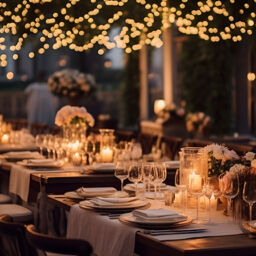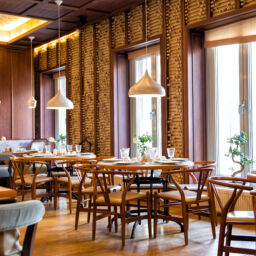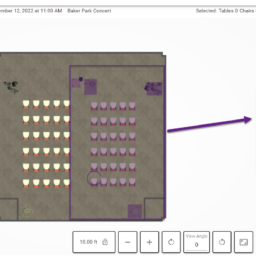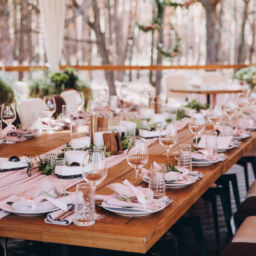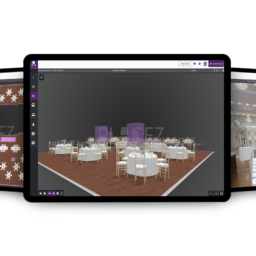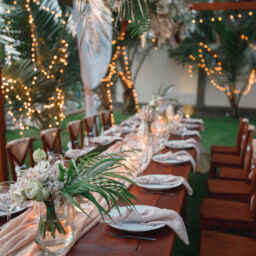Event planning has always been about finding the perfect balance between guest experience and logistical efficiency. But as the trend of micro-events—smaller, more intimate gatherings—gains momentum, the challenge shifts when these events occur in macro spaces like convention centers, stadiums, or large banquet halls.
For event planners and venue owners, this opens up a world of opportunities. Instead of viewing oversized spaces as a hurdle, think of them as blank canvases waiting to be transformed. This blog uncovers innovative strategies to maximize large venues for micro-events, offering insights into design, space management, and guest engagement.
Whether you’re an event planner rethinking your approach or a venue owner looking to attract niche gatherings, this is your ultimate guide to creatively using large venues for smaller, impactful events.
Why Micro Events in Macro Spaces?
Micro-events are all about intimate connections, personalization, and curated experiences. But why pair them with large venues? For some planners, large spaces offer greater flexibility, catering to diverse setups and concepts. Here’s why this trend is proving valuable for both planners and venue owners.
1. Flexibility and Customization
Large venues provide room to experiment with layouts, themes, and designs. This is especially ideal for brands or planners looking to create tailored experiences that cater to specific audiences or objectives. The sheer scale of the venue allows the creation of purpose-built zones—for example, cozy lounges, breakout areas, or themed sections—that elevate the overall experience.
2. Enhanced Ambiance and Exclusivity
Imagine hosting a private dinner for 50 people in an expansive ballroom, complete with dramatic lighting and a ceiling adorned with chandeliers. Using macro spaces for micro-events enhances a sense of exclusivity, giving guests the impression they’re attending a signature, one-of-a-kind event that money can’t buy.
3. Future-Proofing Against Growth
For brand or product launches, smaller events are often strategic. But what if the next event demands scaling up attendance? Choosing a large venue early allows planners to lay the foundation for future scalability without frequently moving venues.
How to Transform Large Venues for Micro Events
Turning a cavernous venue into the perfect backdrop for an intimate affair may seem daunting, but it’s entirely achievable with strategic planning. Here’s how to do it right:
Consider Creative Layouts
Zoning and Partitioning
- Large venues can feel overwhelming, especially for events with fewer attendees. Create zones within the venue using partitions, draping, greenery, or modular furniture setups. For instance, use movable walls or curtains to form smaller, more intimate sections. These zones can cater to specific purposes, such as speaker panels, dining areas, or casual networking lounges.
Mixed Seating Styles
- Blend traditional table seating with informal lounges and standing areas. This creates diverse spaces that encourage different forms of interaction. A mix of round tables, cozy armchairs, and bar stool setups can make the space dynamic and inviting.
Set the Mood with Lighting
Light is one of the most powerful tools for transforming large spaces into smaller, distinct areas. Dimmed lighting, string lights, or LED spotlights can draw focus to specific zones while leaving unused areas in darker shadows, effectively minimizing the sense of vastness.
Pro Tip: Use lighting to highlight key areas—e.g., a well-lit stage or spotlighted dining section—to center attention where you want it most.
Leverage Décor to Anchor Themes
When done right, décor can make a cavernous space feel cozy. Opt for themes with bold, defining elements, such as large-scale floral installations, draping, or statement furniture pieces. Tall centerpieces or hanging installations can also create an intimate canopy effect—perfect for micro-events like weddings or high-end dinners.
Design tip for venue owners: Showcase how flexible your space is by creating theme packages for planners who may be unfamiliar with transforming a large venue.
Utilize Technology for Immersive Experiences
Large venues offer ample space for cutting-edge technology, making them the ideal location for incorporating innovations like projection mapping, virtual or augmented reality, or LED screens. These tools can infuse a micro-event with immersive storytelling and interaction, leaving a lasting impression on attendees.
Consider using apps or gamification to encourage guest engagement in various zones for networking events. Breakout sessions or QR-code-driven scavenger hunts are great ways to entertain guests in larger spaces.
Opportunities for Venue Owners
Venue owners can gain by positioning themselves as go-to spaces for micro-events. Here are some tips for marketing your venue as an adaptable option for smaller gatherings.
1. Develop Flexible Rate Packages
Smaller events typically have smaller budgets, so introduce customizable pricing plans to attract micro-event clients. Offer half-day rentals, partition-based fees, or dedicated multi-use packages to cater to their needs.
2. Highlight Unique Features
Despite the size of the venue, showcase aspects that make your space versatile, like acoustic adjustments, modular furniture availability, or exclusive lighting options. Providing ready-made solutions reduces planning efforts for clients.
3. Build an Ecosystem
Collaborate with local planners, caterers, and tech providers to offer bundled services. By becoming a one-stop solution, your venue becomes more attractive, particularly to planners juggling multiple responsibilities for intimate gatherings.
Real-Life Success Stories
The power of creativity knows no bounds, and these examples prove how macro spaces can shine in the micro-event world:
-
Luxury Fashion Pop-up in a Downtown Warehouse
A renowned fashion house converted an empty 60,000-square-foot warehouse into a series of Instagrammable zones featuring rotating displays of their newest collection. Guests were guided through storytelling vignettes at their own pace, reinforcing exclusivity. -
Wedding Reception in a Stadium Skybox
What was initially an unconventional idea became a 50-guest micro-wedding perched high above a football field. The ultimate talking point? Using the stadium’s jumbotron for a custom video montage of the couple’s relationship.
These examples highlight how creative thinking coupled with the right venue can lead to unforgettable events.
Elevate Every Micro Event
By seamlessly blending purpose and creativity, micro-events in large venues offer unmatched opportunities to design unique and memorable experiences. Whether you’re an event planner or a venue owner, an intentional approach to layouts, technology, and customer-centered offerings can help you shine in the micro-event space.

